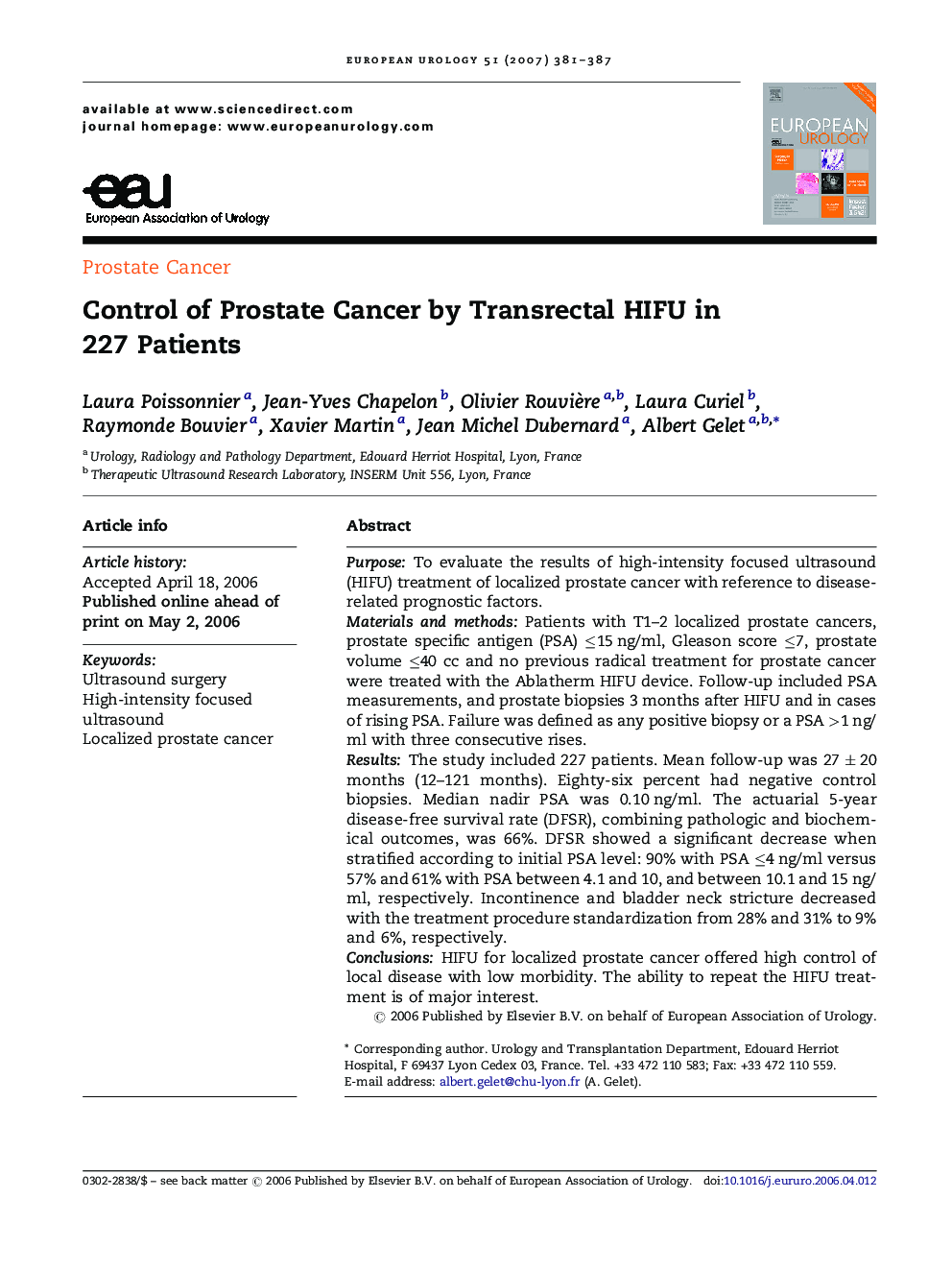| Article ID | Journal | Published Year | Pages | File Type |
|---|---|---|---|---|
| 3928904 | European Urology | 2007 | 7 Pages |
PurposeTo evaluate the results of high-intensity focused ultrasound (HIFU) treatment of localized prostate cancer with reference to disease-related prognostic factors.Materials and methodsPatients with T1–2 localized prostate cancers, prostate specific antigen (PSA) ≤15 ng/ml, Gleason score ≤7, prostate volume ≤40 cc and no previous radical treatment for prostate cancer were treated with the Ablatherm HIFU device. Follow-up included PSA measurements, and prostate biopsies 3 months after HIFU and in cases of rising PSA. Failure was defined as any positive biopsy or a PSA >1 ng/ml with three consecutive rises.ResultsThe study included 227 patients. Mean follow-up was 27 ± 20 months (12–121 months). Eighty-six percent had negative control biopsies. Median nadir PSA was 0.10 ng/ml. The actuarial 5-year disease-free survival rate (DFSR), combining pathologic and biochemical outcomes, was 66%. DFSR showed a significant decrease when stratified according to initial PSA level: 90% with PSA ≤4 ng/ml versus 57% and 61% with PSA between 4.1 and 10, and between 10.1 and 15 ng/ml, respectively. Incontinence and bladder neck stricture decreased with the treatment procedure standardization from 28% and 31% to 9% and 6%, respectively.ConclusionsHIFU for localized prostate cancer offered high control of local disease with low morbidity. The ability to repeat the HIFU treatment is of major interest.
